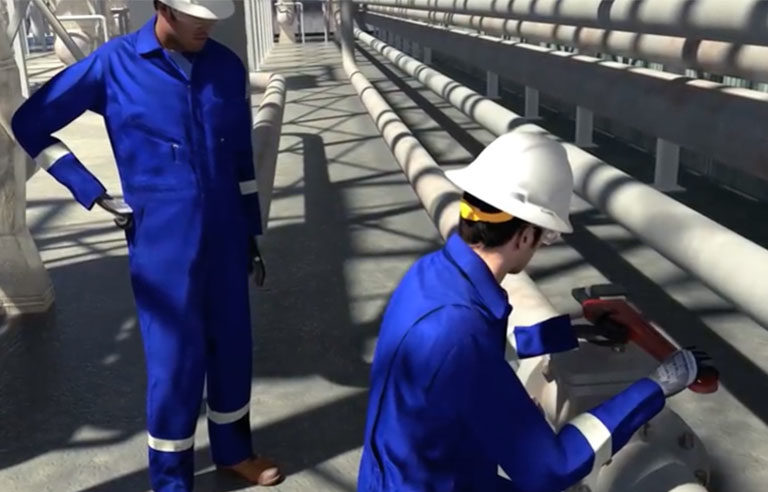CSB releases new video on Louisiana refinery fire, includes safety recommendations

Washington – The Chemical Safety Board has released a video on last year’s ExxonMobil refinery fire, which severely burned four workers in Baton Rouge, LA.
Fire in Baton Rouge, uploaded Oct. 16, includes comments from CSB Chairperson Vanessa A. Sutherland and lead investigator Mark Wingard. It details the incident that occurred Nov. 22, 2016, during maintenance in the refinery’s sulfuric acid alkylation unit.
Two workers were attempting to get a spare isobutane pump working but could not open an inlet plug valve because of a malfunctioning gearbox. The workers removed the gearbox to turn the valve stem with a pipe wrench, but four bolts – on an older support bracket design – also secured a critical pressure-containment part known as a top-cap, which came apart and released 2,000 pounds of pressurized isobutene, a hydrocarbon gas.
The video shows that workers could have removed two horizontal bolts on the support bracket instead of four vertical bolts that were attached to the top-cap.
In a safety bulletin released Sept. 18, CSB states that only 15 of the approximately 500 plug valves in the alkylation unit had support brackets connected to the top-cap, a design that was more than 30 years old.
“Had the refinery adequately addressed human factors in its most recent process hazard analysis,” Wingard said, “workers could have discussed difficulties with removal of the plug valve gearboxes, prompting the company to identify potential hazards. As a result, the older valves could have been recommended for replacement and the incident would have been avoided.”
CSB issued the following recommendations for chemical manufacturing facilities:
- Create accurate and detailed written procedures for potentially dangerous work, including removing inoperable gearboxes. This is critically important when different kinds of equipment or configurations that might cause confusion are present.
- Provide training – focused on equipment and processes – to ensure workers can perform their duties safely, boost hazard awareness and prevent incidents.
- Use the Hierarchy of Controls to alleviate hazards and look at “human factors associated with operational difficulties that exist in your machinery and other equipment.”
“The safety management practices outlined in our bulletin could have prevented the fire in Baton Rouge,” Sutherland said. “We urge companies to share and implement our key safety lessons at their facilities in order to prevent future injuries and property damage.”
Post a comment to this article
Safety+Health welcomes comments that promote respectful dialogue. Please stay on topic. Comments that contain personal attacks, profanity or abusive language – or those aggressively promoting products or services – will be removed. We reserve the right to determine which comments violate our comment policy. (Anonymous comments are welcome; merely skip the “name” field in the comment box. An email address is required but will not be included with your comment.)

